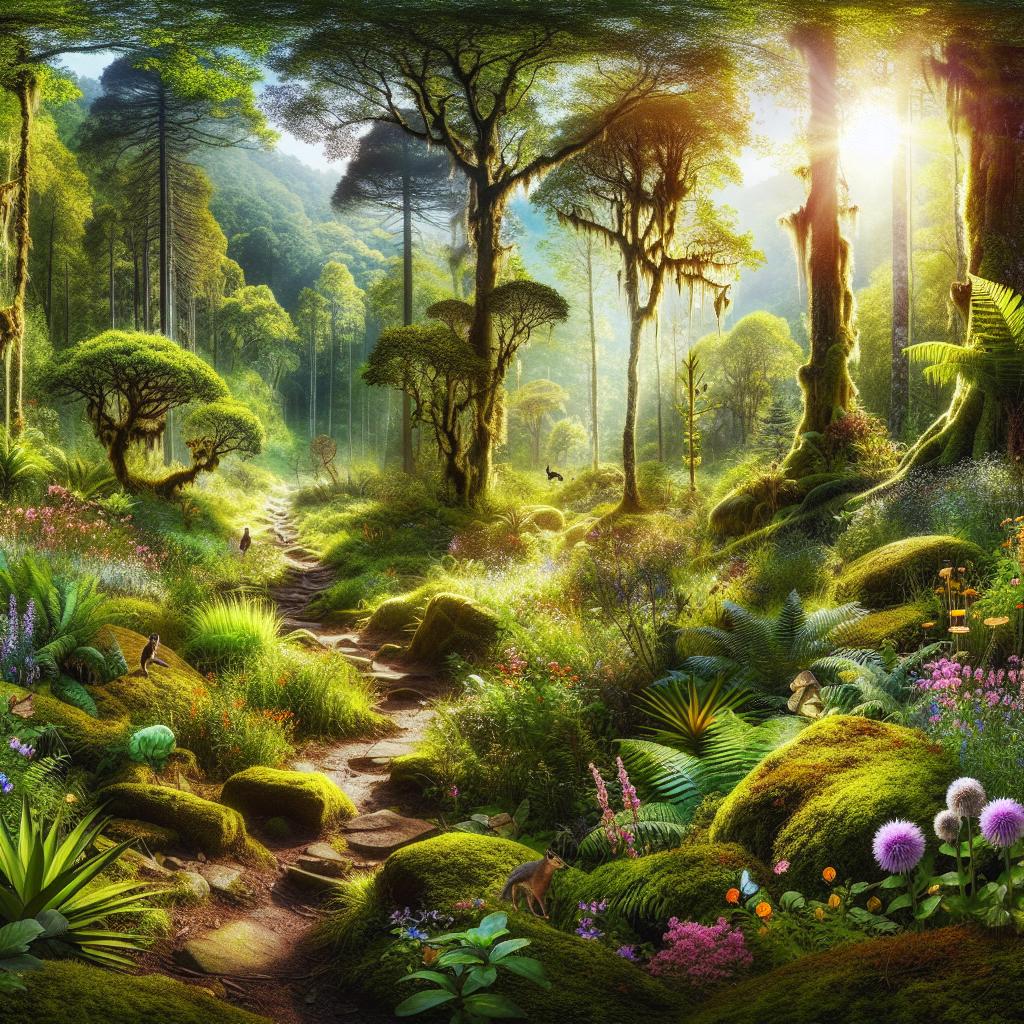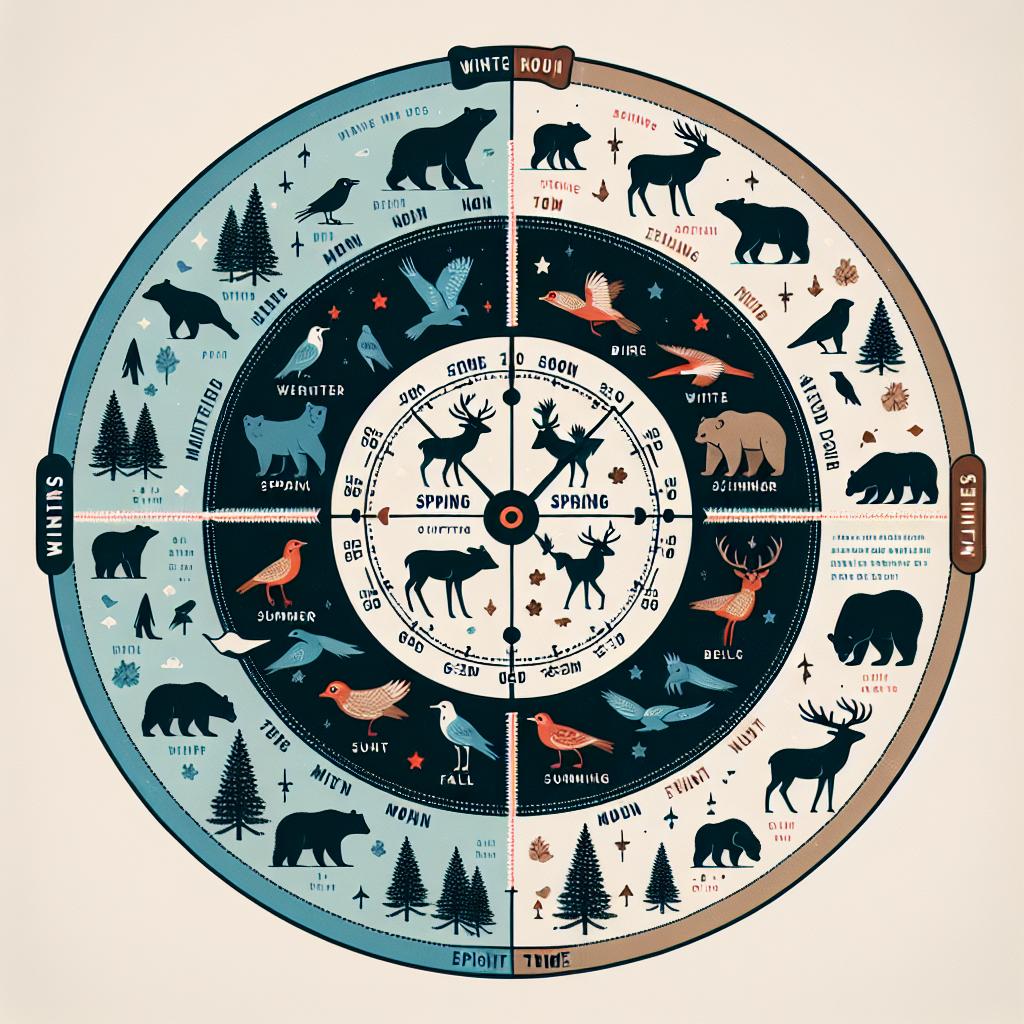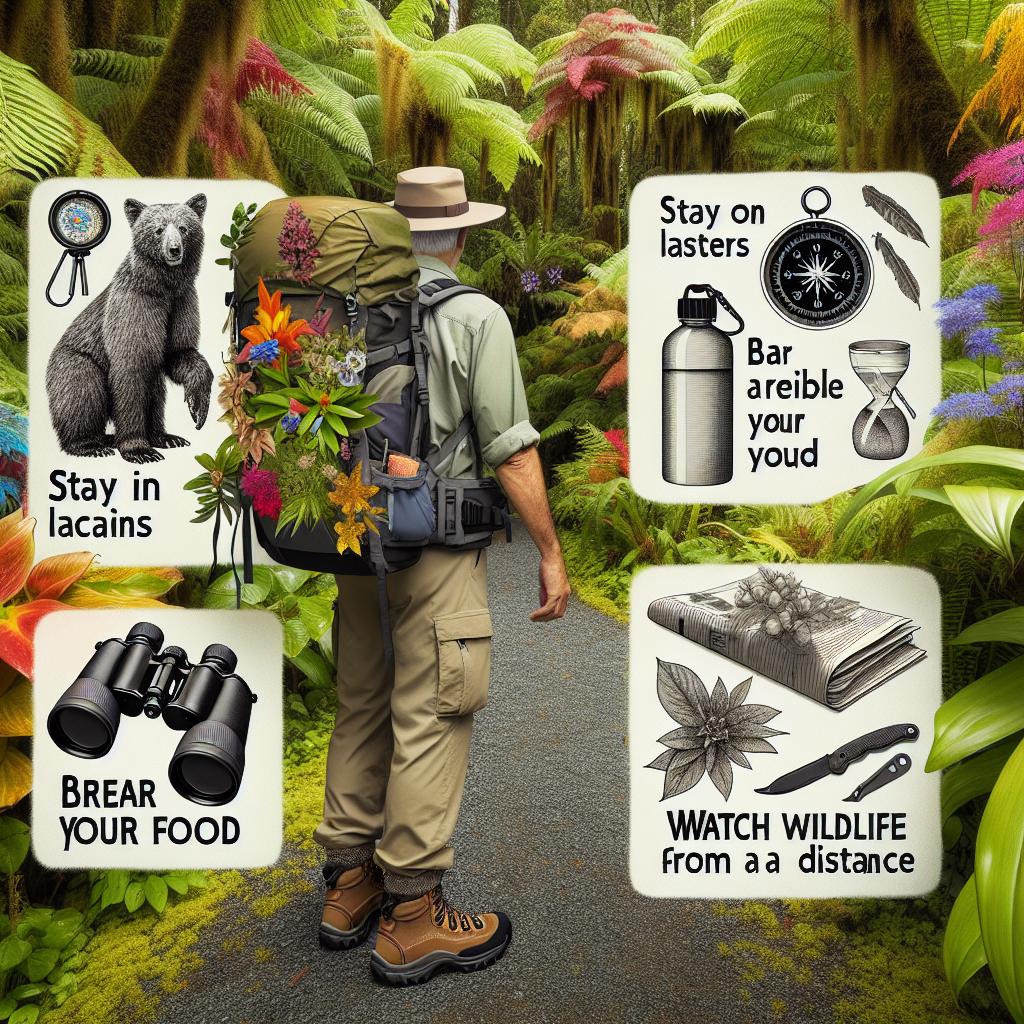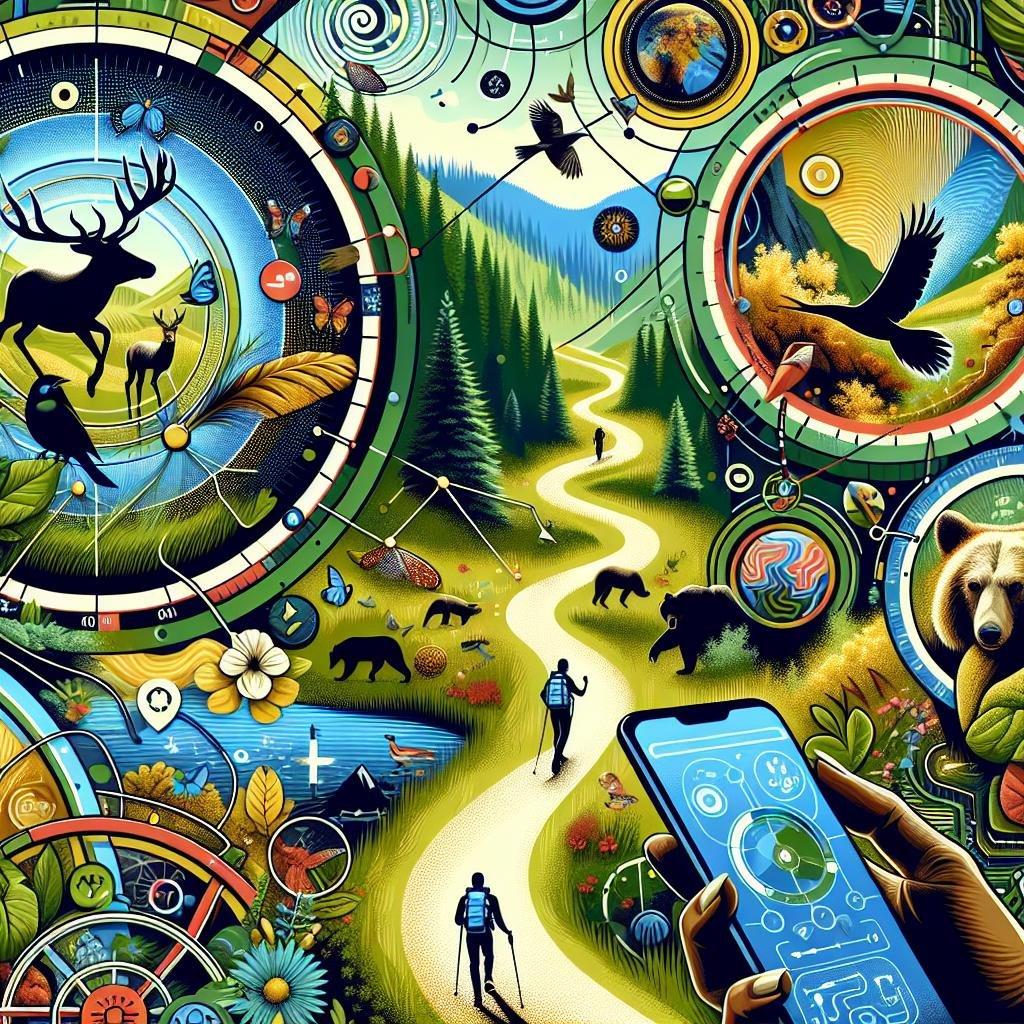In the stillness of dawn, where the first rays of sunlight kiss the dew-laden leaves, lies a world teeming with life, waiting to be discovered. Imagine the rustle of leaves hinting at the subtle movements of a curious fox, the distant call of an eagle soaring above rugged peaks, or the sudden splash of a fish breaking the surface of a serene lake. Hiking offers more than just a journey through nature’s spectacular landscapes—it is an invitation to witness the magical encounters with the wild creatures that call these places home. This article navigates through some of the best hiking trails where the beauty of the trek is matched only by the awe-inspiring wildlife spotting opportunities they offer. Ready your senses, lace up your boots, and embark on an adventure where every step holds the promise of a wild encounter.
Exploring Scenic Trails with Diverse Flora and Fauna
As you delve into the heart of nature, many trails offer an incredible canvas painted with vibrant flora and teeming fauna. Imagine hiking through dense forests where the trees sway gently, and the air is fresh with the scent of pine and wildflowers. The trails are often adorned with plants and flowers like:
- Wild Roses: Adding a splash of pink and red beauty.
- Bluebells: A carpet of blue that entices every photographer.
- Fern Groves: Offering a lush green backdrop.
Beyond the captivating plant life, these trails provide numerous wildlife spotting opportunities. From the subtle chirping of songbirds to the sudden leap of a deer, each step brings a chance to witness nature’s wonders. Commonly spotted wildlife include:
- White-tailed Deer: Graceful and often seen at dawn or dusk.
- Red Fox: Known for their vibrant fur and stealthy movements.
- Great Horned Owl: Usually perched silently, watching the world below.
| Trail Name | Key Highlight |
|---|---|
| Forest Whisper Trail | Scenic ferns and birdwatching spots |
| Meadow Lark Path | Wildflower blooms and deer sightings |
| Twilight Ridge | Sunset views and owl habitats |

Optimal Times and Seasons for Wildlife Encounters
For avid wildlife enthusiasts, timing is everything. The break of dawn and the twilight hours often present the best opportunities for wildlife encounters. During these crepuscular hours, animals are more active and the interplay of light and shadow adds a mystical dimension to the experience. Seasons also play a crucial role. Spring and early summer are fantastic for spotting young animals venturing out with their families, while autumn provides a unique chance to witness animals preparing for the winter. To maximize your chances, look for areas with diverse habitats which naturally support a variety of species.
Here are prime months for different types of wildlife:
| Wildlife Type | Best Months |
|---|---|
| Birds | April – June |
| Mammals | May - October |
| Reptiles | July – September |
| Butterflies | June – August |
Total immersion in nature’s rhythm enhances your understanding and appreciation of wildlife behaviors. Understanding migration patterns, mating seasons, and feeding times can significantly boost your chances of observing animals in their natural element. If your goal is to photograph wildlife, consider moon phases and weather conditions—overcast skies can reduce shadows and highlight texture, while a full moon may embolden nocturnal species to emerge. The more you adapt to the cycles of the wildlife, the more rewarding your hiking experiences will be.

Essential Gear and Tips for a Successful Wildlife Hike
Embarking on a wildlife hike requires more than just good physical condition; you also need the right gear to enhance your experience and ensure your safety. Start by wearing comfortable, moisture-wicking clothing and sturdy hiking boots with reliable traction. A lightweight, waterproof jacket is essential in case of sudden changes in weather. Don’t forget a wide-brimmed hat and sunglasses for sun protection. To make the hike rewarding, bring a pair of binoculars for distant wildlife observations and a camera with a zoom lens to capture those perfect moments without disturbing the animals.
A well-stocked hiking pack is crucial. Ensure it includes the following:
- Water and Snacks: Hydration is key. Bring at least two liters of water and high-energy snacks like nuts and dried fruits.
- First Aid Kit: Essential for treating minor injuries or insect bites.
- Navigation Tools: A map and GPS device or a fully charged smartphone with offline maps.
- Wildlife Guidebook: Useful for identifying various species along the trail.
- Flashlight or Headlamp: For exploring during early mornings or dusk.
Here’s a quick reference table for essentials:
| Item | Purpose |
|---|---|
| Binoculars | Distant observation |
| Map & Compass | Navigation |
| First Aid Kit | Emergency treatment |
Top Trails for Spotting Iconic and Rare Species
Exploring the rich landscapes of North America’s top trails can be a delight for wildlife enthusiasts. One spectacular location is the Great Smoky Mountains National Park. Noted for its impressive biodiversity, this park offers trails like the Alum Cave Trail, where you might catch a glimpse of the elusive red fox or the majestic Eastern Elk. Equally compelling is Yellowstone National Park, where the Lamar Valley Trail, often referred to as the ‘Serengeti of North America,’ provides opportunities to see wolves, grizzly bears, and bison in their natural habitats. These trails make every step a perimeter into the wild, unveiling sights that are both exhilarating and humbling.
For those yearning to spot unique species, consider hiking in Everglades National Park. The Anhinga Trail is a renowned pathway where hikers can easily spot alligators sunbathing along the water’s edge, as well as rare birds like the Roseate Spoonbill and the endangered Snail Kite. In contrast, the Olympic National Park’s Hoh Rain Forest offers the Hall of Mosses Trail, replete with lush, green landscapes inhabited by Roosevelt Elk and the enchanting Northern Spotted Owl. Below is a quick reference table for these top trails:
| Trail | Notable Species | Location |
|---|---|---|
| Alum Cave Trail | Red Fox, Eastern Elk | Great Smoky Mountains NP |
| Lamar Valley Trail | Wolves, Grizzly Bears, Bison | Yellowstone NP |
| Anhinga Trail | Alligators, Roseate Spoonbill, Snail Kite | Everglades NP |
| Hall of Mosses Trail | Roosevelt Elk, Northern Spotted Owl | Olympic NP |
So, pack your essentials and get ready for an unforgettable adventure where each trail holds the promise of encountering nature’s rarities and icons!
Q&A
Q&A: Exploring Hiking Trails with Wildlife Spotting Opportunities
Q: What are some of the best hiking trails for wildlife spotting?
A: There are numerous trails around the world known for their remarkable wildlife sightings. Some favorites include the Pacific Crest Trail in the United States, where you might spot bears and rare birds, and the Milford Track in New Zealand, home to unique species like the kea and kiwi birds. In Africa, Uganda’s Bwindi Impenetrable Forest offers a chance to see mountain gorillas in their natural habitat.
Q: What kinds of animals can hikers expect to see on these trails?
A: This varies by region. In North America, hikers might encounter deer, elk, and various birds of prey. In South American rainforests, you could see colorful toucans, jaguars, and anacondas. Africa offers sightings of the Big Five—elephants, lions, leopards, buffalo, and rhinoceros—as well as numerous primate species. In Asia, trails may provide glimpses of tigers, red pandas, and snow leopards.
Q: Are there specific times or seasons that are better for wildlife spotting?
A: Absolutely! Wildlife activity often peaks during certain times of the year. For example, fall is a great time to see deer during their rutting season, while spring brings a burst of bird activity and the emergence of hibernating animals. Early morning and dusk are generally the best times to see animals, as many are most active during these cooler hours.
Q: What should hikers keep in mind to ensure a safe wildlife spotting experience?
A: Safety is paramount. Always maintain a safe distance from animals, never feed them, and make sure to hike in groups if possible. Carry essentials like a map, whistle, and first aid kit. It’s also crucial to respect the environment by sticking to trails, packing out all trash, and making as little noise as possible to avoid disturbing the wildlife.
Q: How can hikers contribute to wildlife conservation while enjoying these trails?
A: Hikers can support conservation efforts by following Leave No Trace principles, participating in trail clean-ups, and donating to or volunteering with local wildlife organizations. Reporting any sightings of endangered species to park authorities can also help in conservation monitoring efforts. Being mindful and educating others about the importance of preserving natural habitats can make a significant difference.
Q: Are there any guided tours available for wildlife spotting?
A: Yes, many national parks and reserves offer guided hikes with knowledgeable guides who can point out various species and provide fascinating insights into their behaviors and habitats. These tours are not only educational but also increase your chances of spotting diverse wildlife since guides are adept at tracking and identifying animals.
Q: What equipment or gear is recommended for these wildlife-spotting hikes?
A: Binoculars and a good camera are essential for observing and capturing distant wildlife. Dress in layered, earth-toned clothing that blends with the environment to avoid startling animals. A sturdy pair of hiking boots, a hat, sunscreen, insect repellent, and plenty of water are also recommended. Don’t forget a trail map, compass, and any permits required for the area.
Q: Can beginners enjoy trails with wildlife spotting opportunities?
A: Absolutely! There are many beginner-friendly trails that offer ample wildlife viewing opportunities. Parks often have well-marked, easy-to-navigate paths suitable for hikers of all levels. It’s a great way to introduce newcomers to the joys of hiking and the wonders of the natural world while developing their outdoor skills.
We hope this Q&A inspires you to lace up your hiking boots and go exploring! Whether you’re an experienced hiker or just starting out, the chance to see wildlife in their natural habitat is an unforgettable experience that brings you closer to nature.
Insights and Conclusions
As we conclude our journey through some of the most captivating hiking trails that double as natural wildlife galleries, remember that the art of truly experiencing these trails lies in the delicate balance of adventure and reverence. Embrace each path with a sense of wonder, allowing your curiosity to guide you quietly through the whispers of leaves and the rustle of hidden creatures. Whether you’re seeking the silent beauty of a deer at dusk, the vibrant flash of an exotic bird, or simply the serene embrace of untouched nature, these trails offer more than just a route from point A to B. They invite you to step into a living, breathing canvas, where every footprint can be a chapter in your own story of discovery. So lace up your boots, adjust your binoculars, and let the wilderness welcome you into its timeless embrace. Adventure awaits, with whispers of the wild echoing just beyond the next bend.

